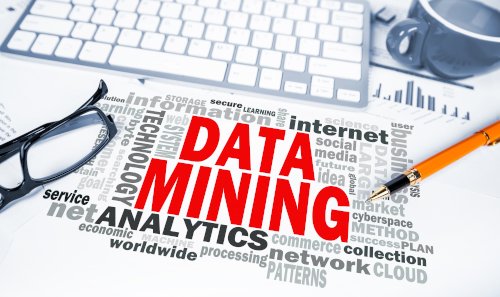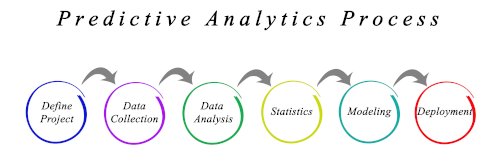What are data mining services?

In simple words, ‘Data Mining is the process of extracting valuable data from a large pool of unorganized raw data is called as data mining’.
Data Mining is also referred to as ‘Knowledge Discovery in Data (KDD). Large companies use data Mining to sift through Big Data. Data Mining involves analyzing large batches of raw data by making use of one or many software.
The aim of data mining
Data Mining aims to discover patterns to understand patterns, trends, correlations to predict customer behaviour and market trends.
Based on the extracted data, companies create a hypothesis and test it on a set of volunteers or randomly selected customers. If the theory works, it opens new avenues for businesses to materialize the desired effects.
By using data mining, businesses can develop strategies that will help them learn about their customers. This will allow companies to leverage resources in an optimal manner and inch closer to their objectives.
Data Mining also uses various mathematical algorithms and involves collecting data, warehousing, and processing it. Over the years, data mining has emerged as an effective strategy to determine the probability of future events.
Critical characteristics of Data Mining

- Data mining focuses on large data sets, and for analyzing the same, it uses automated techniques like credit card transactions, satellite information, etc. Conventional statistical data analysis is not possible.
- Data Mining involves breaking down a complex data structure.
- The primary purpose of data mining is to come up with decision-oriented information.
- Automatic pattern predictions are made on behaviour and trend analysis.
- The heterogeneous data is stored in legacy systems.
- Make valuable predictions based on likely outcomes.
What are the two types of data mining?

The two popular types of data mining are:
- Predictive Data Mining Analysis: It works on a prediction indicating what may come up in the future.
Predictive Data Mining Analysis is further classified into 4 types:
- Classification Analysis: As the name suggests, it classifies the data into various categories. One famous example is the Email provider, which organizes the emails into legitimate and spam.
- Regression Analysis: It is popularly used for forecasting and predictions. It tries to bring out the dependency between variables.
- Time Serious Analysis: It is the analysis of well-defined data points which are measured at regular intervals.
- Prediction Analysis: It is related to time series, but the time is not bound.
- Descriptive Data Mining Tasks: These tasks are aimed at turning random data into useful information.
Descriptive Data Mining tasks are further classified into 4 types:
- Clustering Analysis: It deals with categorizing similar data into one type. For Example, The similar buying behaviour of customers can be classified as one with similar products.
- Summarization Analysis: It deals with finding a compact, accurate description of a given data set.
- Association Rule Learning: It deals with associating various variables with each other in large databases.
- Sequence Discovery Analysis: It is about finding a sequence of activities. For example, finding data like, in a store, a user may buy a soap first followed by a scrubber.
What are the benefits of outsourcing Data Mining?
Data Mining is a cumbersome and time consuming task. It involves high technical skills and requires knowledge of operative various analytical tools and programming languages.
The best way to mine data to get something useful is to outsource it: Here, are the benefits that come with outsourcing data mining:
- Outsourcing is Cost-effective as the outsourcing firms use the best technology and resource pool to deliver best quality work at cheaper rates.
- Quick turn around time as the work gets done faster.
- Better work precision as the data mining is handled by professionals
- It allows you to handle your core business better
Is Data Mining a promising career?

A data mining specialist specializes in using data analysis tools, programming languages, and operating systems to extract meaningful data from a vast pool of data.
A data mining specialist has a mastery over the following:
- Expertise in using analytical tools such as SQL, NoSQL, SAS, and Hadoop.
- Well aware of programming languages such as Java, Python, and Perl
- Can handle operating systems such as LINUX
A data mining specialist develops a keen business sense as they are supposed to turn information into actionable insights. They understand the organization’s business goals and aims for the future. They analyze the data and come out with a set of technical findings, which are translated into various visualization techniques like presentations, bar charts, and scatterplots for internal and external shareholders to understand. They also provide the required data support to design customized marketing campaigns. They also identify any anomalies in the data.
Data Mining Specialist Salary
As per the report published in payscale.com, a data mining specialist in 2021 is paid an average salary of 62,225$ per annum. They generally move up to higher job titles in 20 years. They are required to have powerful skills in SQL and SAS
Is Data mining in demand?
Data Mining is emerging as an integral part of the business world. Its demand is calculated to grow by 20% in the next 5 years. More and more business firms are increasingly indulging in data mining to scale up their profits. Data Mining is benefitting all industries irrespective of their sizes. Data Mining specialists search complex data and hold a significant position as an active member of the science team. The scope of statistics, artificial intelligence, machine learning has vastly influenced data mining which will continue to grow exponentially.
Data Mining brings in methods like data visualization, statistics, machine learning, and various other ways. These techniques are used in combination to cater to varied requirements to handle complex challenges in businesses.
Data mining finds its application in various fields like:
- Future Healthcare: Data Mining helps determine the best-suited practices to reduce the overall cost of healthcare. It can be used to forecast the medical conditions of patients that will be handy in assisting them to plan their lives accordingly. Data mining can also help you track any fraudulent activities.
- Education: Using data mining, the teaching pedagogy can be significantly enhanced. Though data mining is still beginning to find its application in the education industry, it offers excellent potential to understand the future learning needs of the students.
- Market Analysis: Data Mining uses a modelling technique that proposes a hypothesis that is tested to formulate future business plans. Data Analysis goes a long way in understanding the buying behaviour of the customers.
- Customer Relationship Management: The customer data is analyzed to build a long-lasting relationship with the customers.
- Manufacturing Engineering: Data mining helps manufacturing firms to identify patterns in processes that otherwise are too difficult to understand. Using data analytical tools, one can recognize the relation between various system-level design elements, including architecture, customer data needs, and portfolio of products.
- Finance and Banking: Banking and finance always deal with a massive amount of data. Data Mining is extremely useful in finding correlations and trends in businesses. This information can prove out highly beneficial in acquiring new customers for retaining the older ones.
- Overcoming Fraudulence: Fraudulence cost millions of dollars to business firms each year. Data Mining provides a great alternative to overcome data breaches. It makes use of a model that identifies and classifies every data document into fraudulent or non-fraudulent.
- Tracking Patterns: Data mining is used to track data patterns. Such patterns are then used to formulate business conclusions.
- Association: The data is used to identify the relationship between various parameters in the same transaction. It helps in identifying the purchase trends or product preferences.
- Criminal Investigation: Data Mining helps to explore the hidden relationships in data by using artificial intelligence methods.
- Customer Segmentation: A specific technique named clustering is used in Customer Segmentation. The customers are segmented on particular criteria, and using data analysis, future trends are predicted.
- Detecting Lies: If a data item does not fall in line with precedent behaviour, it is either an exception or an outlier. This can be easily seen using data mining tools.
Predicting Customer Behavior
A unique technique called Regression is used in data mining to predict customer behaviour and yield. Regression is widely used to predict competition, market demands, etc.
Research Analysis: Data Mining is used to extract changes, associations, patterns, and anomalies from large data sets.
Corporate surveillance: Data Mining is used to monitor a customer’s behavior or a group of customers. The data gathered can be used for various purposes like direct marketing on Google.
Data Mining is also popularly used in decision trees, neural networks, visualization, etc. The related terms like data dredging, data snooping, and data fishing are increasingly used to derive useful information from extensive population data. Data Mining is expected to grow by leaps and bounds in the world of digitalization.


